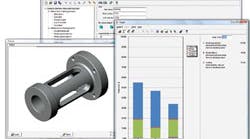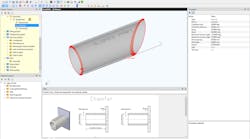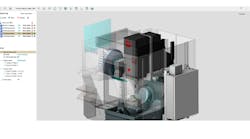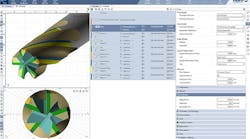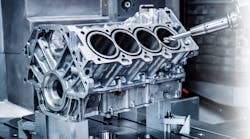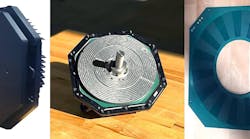When businesses come under pressure, production is among the first areas to be cut. Expenses in special purchasing, inventory and energy have a knack for standing out on a page. It’s a perfectly reasonable place to start: highlight the fat in the process and trim. But perhaps the most salient solution has nothing to do with the manufacturing process at all.
At least one software developer suggests the easiest way to save on costs is to reduce the inefficiencies already designed into a product. Design for Manufacture and Assembly (DFMA) software, from Boothroyd Dewhurst, seeks to optimize assembly tasks and manufacturing processes at the earliest stages of design, when revisions are least expensive and easiest to make.
DFMA is based on two complementary approaches: Design for assembly (DFA) and design for manufacture (DFM). DFA helps engineers evaluate the overall functions of every component in a design, highlighting unnecessary parts while estimating how each part contributes to cost, and reducing complexity. DFM, meanwhile, identifies the cost drivers of manufacturing and gives engineers the ability to assess the costs of a wide range of manufacturing processes and materials in the earliest development stages.
DaTuM3D, a custom-design firm in Watertown, MA, has used DFMA for 13 years. The company brings customers’ ideas for products to fruition, analyzes and prototypes them, and proceeds through branding and market positioning. Over the course of that process, engineers will fabricate their own verification prototypes.
“By doing that, inherently, we’ve introduced manufacturing awareness,” claims Steve Venditti, owner of DaTuM3D. “That’s a key thing. You can’t help but have [DFMA] become inbred into your designs. You start trying to consolidate or combine as many pieces as possible into a particular part.”
Venditti will showcase the DFMA findings to his clients, taking them step-by-step through the analysis, from the different materials that can be used, to various processes that can impact cost.
“Everything we do here is not only designed, but we’re developing verification prototypes and confirming each process internally,” says Venditti. “A lot of our competitors do their design inhouse, then send out their prototype to another company for testing. By doing it internally, we can make the changes to the design easily. You’ve got to provide the customer the highest-end product possible.”
Engineers often rely on what they know during the design process. But, that expertise sometimes clashes with emerging alternatives. DFMA includes an extensive library of data for various materials and processes.
A useful example of this occurred when Deere & Company had to make modifications to off-road equipment in order to comply with 2006 Environmental Protection Agency regulations requiring specific reductions of oxides of nitrogen in non-road diesel engines. Making changes in Deere’s Tier 3 engines required altering the basic combine platform. DFMA was used by Deere to analyze the design for the landing deck and simplify the assembly to save cost. It resulted in 83 design improvement ideas.
In the redesign work, Deere focused on three tactics: shortening the deck sheet, which is a section of perforated metal flooring that personnel stand on while servicing the combine; strengthening the structural support; and modifying the ladder rails, which were originally made from round steel tubes.
DFMA’s work, with the design team, found that changing the ladder rails to rectangular tubes creates greater structural support and lightens the structure. It also cut the 17-part ladder down to a simpler 10-part assembly. Overall, the engineering team cut their target cost for the landing deck by 7 percent.
“We had to take cost out of the design without affecting its integrity, and the software helps us determine how to do that,” says Matt Saxton, cost management specialist at Deere. “We also used the DFMA process to elicit cost-reduction suggestions from suppliers and to get them engaged with our design team. We have a system that rewards suppliers for being costconscious. A lot of times they’ll tell us how we can reduce their costs by changing something in our design.”
The easiest and most meaningful metric to gather is profit-per-squarefoot- of-factory-floor. But, while it’s certainly a valuable number, DFMA widens the picture, capturing the knowledge of cost-to-manufacture, from a product’s earliest creation all the way downstream.
